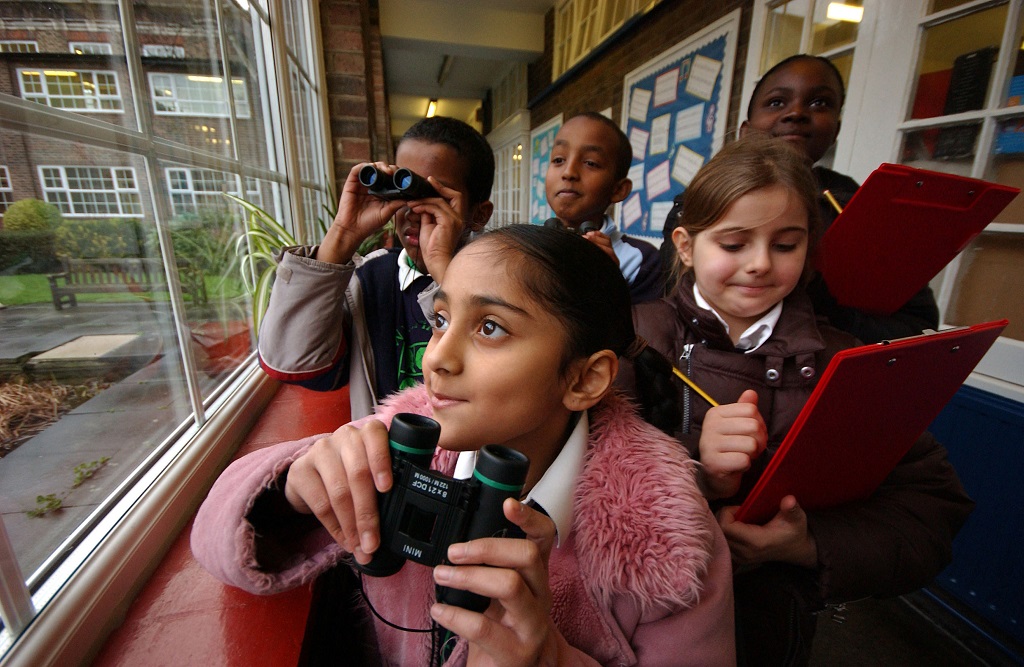
School pupils taking part in the big birdwatch
Thousands of children across Scotland are filling up bird feeders, turning classrooms into bird hides and creating wildlife friendly bakes in preparation for watching and counting the birds in their school grounds.
It’s all part of the 2019 RSPB Big Schools’ Birdwatch, which is running until 22 February.
The Birdwatch is a chance for children to put down their books and discover the nature that lives in their local community. The Birdwatch involves children spending an hour watching and counting the birds that visit their outdoor space, before sending the results to the RSPB.
A recent survey of 200 teachers and 1200 school children from around the UK revealed that 96% teachers believed it was important for children to experience nature at school, while 77% of pupils agreed.
With close to a million school children taking part since its launch in 2002, the RSPB Big Schools Birdwatch is the perfect opportunity for schools to get outside, learn and make their first discoveries in nature.

Children watching birds at school
Last year, over 5000 children and teachers took part counting birds across Scotland. The blackbird was the most common playground visitor in Scotland with 83% schools spotting one during their watch. Robins, house sparrows and blue tits were some of the prominent species spotted in Scotland.
Tremaine Bilham, RSPB Scotland education officer said: ‘Big Schools Birdwatch is a fun and accessible way for children of all ages to engage with the nature around them by taking part in a citizen science project. It’s important for children to get outside and learn about their local wildlife, and this offers pupils a flexible opportunity to learn outside the classroom. The data your class collects will feed into a national data set that will directly impact the conservation work we do at the RSPB.
‘Nature can have a positive impact on physical health, wellbeing, and education. Big Schools’ Birdwatch is an amazing opportunity for offering these experiences to young people.’
The Big Schools Birdwatch is a free activity and only takes an hour to complete. Teachers can pick any day during the first half of the spring term to take part, with the flexibility to run it as a one off or as the centre piece of a cross-curricular study, project work or a way for the children to improve their outdoor space.
Many schools prepare for the event in advance by taking measures to give nature a home in their school grounds, such as putting up feeders and nestboxes and making bird cake. Seeing and counting the birds coming to their feeders during the Big Schools Birdwatch is the perfect reward for their efforts.
To take part in the Birdwatch and help the next generation of children start their own wildlife adventure, visit rspb.org.uk/schoolswatch.
TAGS

